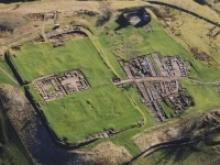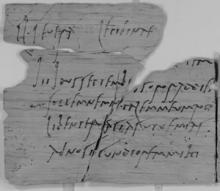Vindolanda was once a Roman outpost just south of Hadrian's wall in the
North of England. The initial fort was built before Hadrian's Wall, in modern Chesterholm, near the modern border of Scotland. The outpost was intended as a guard post overlooking the Roman road known in the middle ages as the Stangate road, which led from the River Tyne to the Solway Firth. Today Vindolanda is an archaeological museum, an English Heritage site, as well as an active dig. Once a Roman fort in what was, to Rome, the Northern Hinterlands, today Vindolanda is a major tourist attraction, as well as a working dig every summer and early fall.The site was initially mentioned as a Roman site in the sixteenth century. It was raided over the years for stone masonry an artifacts until British historian and archaeologist Eric Birley purchased the house (now housing the museum) and grounds with an eye to preserving and excavating the site. His sons Robin and Anthony, and his grandson Andrew Birley, all trained archaeologists, have pursued his vision. Andrew Birley leads the current excavation projects. You can, in fact, for a fee, work as a volunteer excavator during the summer.
While the site itself—which includes most of the bathhouse, the fort and several buildings that were inhabited by civilians—is interesting, it's the human detrius, the pottery shards, coins, bits of glass and weapons, and most of all, the tablets, that are the most interesting. Vindolanda has proven an incredible treasure trove of wooden tablets (and fragments of tablets) inlaid with wax and used for writing, and many wooden tablets inscribed with ink ; over 1500 have been recovered, including military orders, letters home, requisitions, and love letters. They date from the first century CE, and are important not only in terms of British Roman history, but in terms of the history of the Roman empire. Most of the tablets are in the British Museum, but infra red photographs (the best way to recover data from the worn tablets) are widely available in digital form.
The tablet encompass all sorts of correspondence, much of it from elsewhere in the Roman empire. There are birthday party invitations; care packages involving socks and underpants; family matters regarding finances and a share business, even military reports regarding the fighting tactics of the native Briton cavalry, who were not all under Roman sway.
There's an interesting discussion of the role served by Vindolanda here. The University of Oxford is placing high quality digital images of all the tablets and fragments online with a transcription and translation, and authoritative notes, here. Information about the site, the related museums, and site visits is here.

